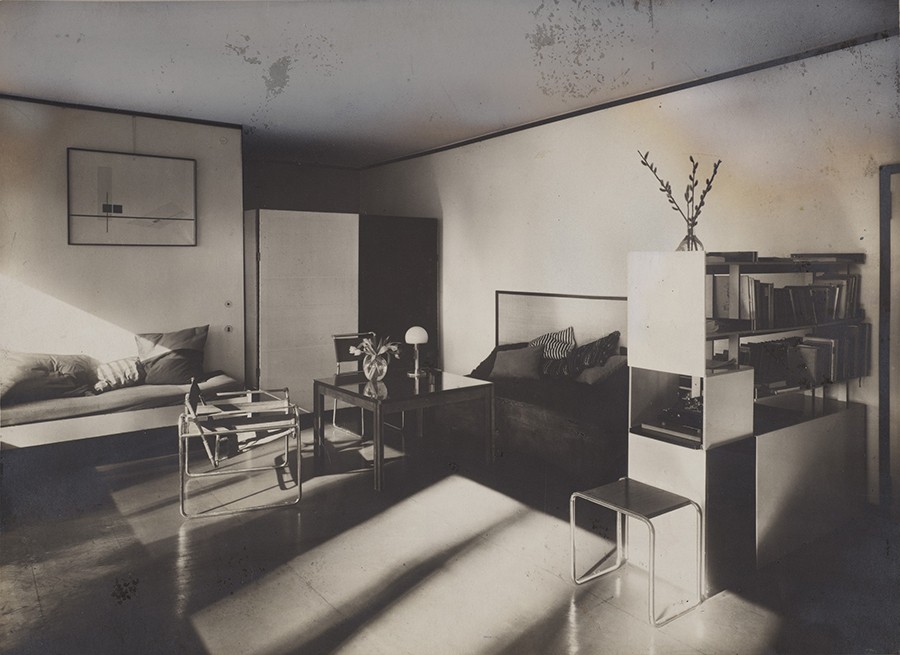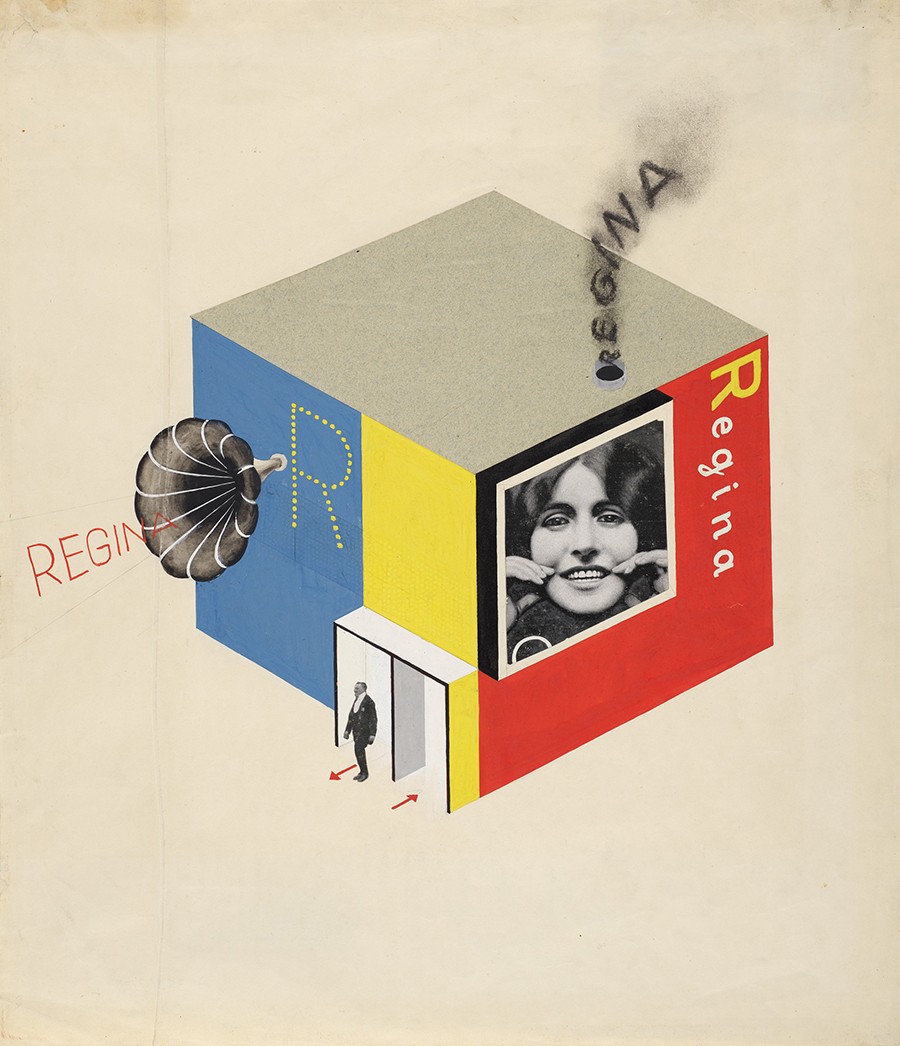A New Exhibit at the Harvard Art Museums Celebrates the 100th Anniversary of the Bauhaus
The Bauhaus and Harvard displays almost 200 works from the largest Bauhaus collection outside of Germany.

Museums/Busch-Reisinger Museum, Museum Purchase, BR50.416. © Artists Rights Society (ARS), New York/VG Bild-Kunst, Bonn. Photo: Harvard Art Museums; © President and Fellows of Harvard College.
This year marks the 100th anniversary of the Bauhaus, a wildly influential school of art, architecture, and design. Founded in Weimar, Germany, in 1919 by architect Walter Gropius, the Bauhaus school taught its students to bridge the gap between art and industry. In a nutshell, it embraced craftsmanship, simplicity, functionalism, and mass production all at once.
That funky metal chair you see everywhere? That’s Bauhaus. Or the one with the tubular legs? That can be traced back to the Bauhaus, too.
So, to celebrate the centennial of the art school, the Harvard Art Museums is debuting The Bauhaus and Harvard. It’s a new exhibit displaying almost 200 works from more than 70 artists like Marcel Breuer, Anni and Josef Albers, Otti Berger, and Paul Klee. The show draws from Harvard’s Busch-Reisinger Museum’s extensive Bauhaus archive, which is the largest collection of Bauhaus materials outside of Germany. Put simply, the Bauhaus and Boston go way, way back.
In Germany, the Bauhaus only existed for 14 years. The school was forced to close in 1933—its leaders feared pushback from the Nazi regime, which pinned the school as a center for communist thought. Afterward, Gropius made his way to Boston, and joined the Harvard Graduate School of Design. Then, when World War II came to a close, Gropius and other Bauhaus artists living in the U.S. established Harvard’s now world-renowned Bauhaus collection.
The Bauhaus and Harvard is the first major exhibition of this collection since 1971, according to its curator, Laura Muir.
“Presenting rarely seen material alongside familiar works, it emphasizes the collection’s strengths as well as its diversity,” said Muir in a statement.

László Moholy-Nagy’s living room),1927–28.Gelatin silver print with opaque watercolor retouching. Harvard Art Museums/Busch-Reisinger Museum, Gift of Ise Gropius, BRGA.21.55.A. © Lucia Moholy Estate/Artists Rights Society (ARS), New York/VG Bild-Kunst, Bonn. Photo: Harvard Art Museums; © President and Fellows of Harvard College.
The show is divided into three parts. The first features pieces produced at the Bauhaus in Germany. (Think: Futuristic teapots, jaw-dropping textiles, furniture, oil paintings, and more.) The second focuses on the influence of Bauhaus teachings, and the third is dedicated to Gropius’ work on the Harvard Graduate Center, which is now known as the Caspersen Student Center. It was the first modern building on Harvard’s campus, and featured original artwork and furniture from leading modern artists. Just beyond this third section, the museum has installed Hans Arp’s Constellations II, a gigantic wall relief commissioned by Gropius for the Graduate Center.
To get into the Bauhaus spirit before your visit, check out The Bauhaus, Harvard’s digital resource for all things Bauhaus. There, you can browse more than 32,000 Bauhaus-related works in a virtual dreamland. You can also peruse more Bauhaus-related events happening through the end of the year at harvardartmuseums.org.
The Bauhaus and Harvard, February 8 through July 28, 2019, Harvard Art Museums, 32 Quincy Street, Cambridge, havardartmuseums.org/bauhaus.

Museums/Busch-Reisinger Museum, Commissioned by the Harvard Corporation, 1950.169. © Artists Rights Society (ARS),New York/VG Bild-Kunst, Bonn.Photo: Harvard Art Museums; © President and Fellows of Harvard College.

Watercolor, charcoal, and touches of graphite with collage of cut printed and colored papers on off-white wove paper. Harvard Art Museums/Busch-Reisinger Museum, Gift of the artist, BR48.101. © Artists Rights Society (ARS), New York/VG Bild-Kunst, Bonn. Photo: Harvard Art Museums; © President and Fellows of Harvard College.


